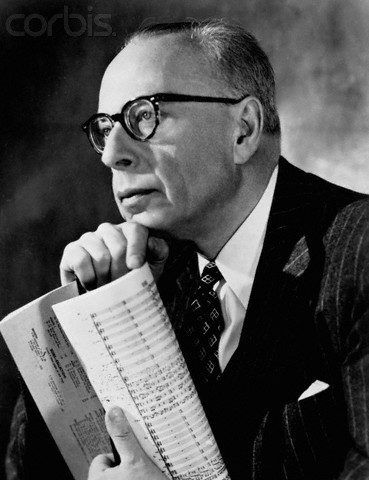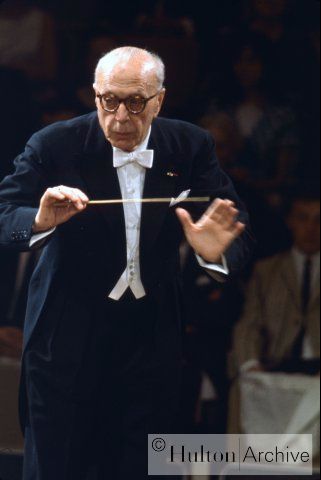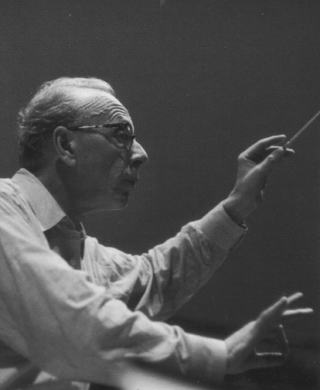<Back to Index>
- Chemist Robert Sanderson Mulliken, 1896
- Conductor György Széll, 1897
- King of Portugal and the Algarves João III, 1502
PAGE SPONSOR
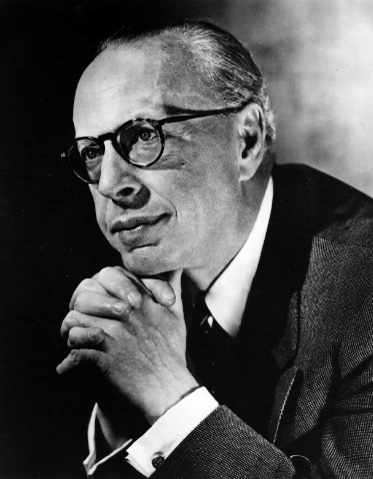
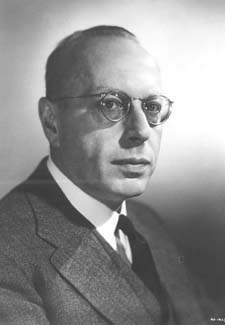
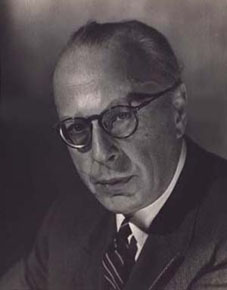
George Szell (June 7, 1897 – July 30, 1970), originally György Széll or Georg Szell, was a Hungarian born American conductor and composer. He is remembered today for his long and successful tenure as music director of the Cleveland Orchestra, and for the recordings of the standard classical repertoire he made in Cleveland and with other orchestras.
Szell
came to Cleveland in 1946 to take over a respected if undersized
orchestra, which was struggling to recover from the disruptions of World War II.
By the time of his death he was credited, to quote the critic Donal
Henahan, with having built it into "what many critics regarded as the
world's keenest symphonic instrument." Through
his recordings, Szell has remained a presence in the classical music
world long after his death, and his name remains synonymous with that
of the Cleveland Orchestra. While on tour with the Orchestra in the
late 1980s, then-Music Director Christoph von Dohnányi remarked, "We give a great concert, and George Szell gets a great review." Szell was born in Budapest but grew up in Vienna. He began his formal music training as a pianist, studying with Richard Robert. One of Robert's other students was Rudolf Serkin; Szell and Serkin became lifelong friends and musical collaborators. In addition to the piano, Szell studied composition with Eusebius Mandyczewski (a personal friend of Brahms), and with Max Reger for
a brief period. Although his work as a composer is virtually unknown
today, when he was fourteen Szell signed a ten year exclusive
publishing contract with Universal Edition in Vienna. In addition to
writing original pieces, he arranged Bedřich Smetana's String Quartet No. 1, From My Life, for orchestra. At age eleven, Szell began touring Europe as a pianist and composer, making his London debut at that age. Newspapers declared him "the next Mozart."
Throughout his teenage years he performed with orchestras in this dual
role, eventually making appearances as composer, pianist and conductor,
as he did with the Berlin Philharmonic at age seventeen. Szell
quickly realized that he was never going to make a career out of being
a composer or pianist, and that he much preferred the artistic control
he could achieve as a conductor. He made an unplanned public conducting
debut when he was seventeen, while vacationing with his family at a
summer resort. The Vienna Symphony's conductor had injured his arm, and
Szell was asked to substitute. Szell quickly turned to conducting
full time. Though he abandoned composing, throughout the rest of his
life he occasionally played the piano with chamber ensembles and as an
accompanist. Despite his rare appearances as a pianist after his teens, he remained in good form. During his Cleveland years he occasionally would demonstrate to guest pianists how he thought they should play a certain passage. In 1915, at the age of 18, Szell won an appointment with Berlin's Royal Court Opera (now known as the Staatsoper). There, he was befriended by its Music Director, Richard Strauss.
Strauss instantly recognized Szell's talent and was particularly
impressed with how well the teenager conducted his own music –- Strauss
once said that he could die a happy man knowing that there was someone
who performed his music so perfectly. In fact, Szell ended up
conducting part of the world premiere recording of Don Juan for Strauss. The composer had arranged for Szell to rehearse the orchestra
for him, but having overslept, showed up an hour late to the recording
session. Since the recording session was already paid for, and only
Szell was there, Szell conducted the first half of the recording (since
no more than four minutes of music could fit onto one side of a 78, the
music was broken up into four sections). Strauss arrived as Szell was
finishing conducting the second part; he exclaimed that what he heard
was so good that it could go out under his own name. Strauss went on to
record the last two parts, leaving the Szell conducted half as part of
the full world premiere recording of Don Juan. Szell
credited Strauss as being a major influence on his conducting style.
Much of his baton technique, the Cleveland Orchestra’s lean,
transparent sound, and Szell's willingness to be an orchestra builder
all came from Strauss. The two remained friends after Szell left the
Royal Court Opera in 1919; even after World War II, when Szell had
settled in the United States, Strauss kept track of how his protégé was doing. In the fifteen years during and after World War I Szell worked with opera houses and orchestras in Europe: in Berlin, Strasbourg — where he succeeded Otto Klemperer at the Municipal Theatre — Prague, Darmstadt, Düsseldorf, and Glasgow, before becoming principal conductor, in 1924, of the Berlin Staatsoper, which had replaced the Royal Opera. In 1930, Szell made his United States debut with the Saint Louis Symphony Orchestra. At this time he was better known as an opera conductor than an orchestral one. At
the outbreak of war in Europe in 1939, Szell was returning via the U.S.
from an Australian tour; he ended up settling with his family in New York City. After
spending a year teaching, Szell began to receive frequent guest
conducting invitations. Important among these invitations was a series
of four concerts with Arturo Toscanini’s NBC Symphony Orchestra in 1941. In 1942 he made his Metropolitan Opera debut; he conducted the company regularly for the next four years. In 1943 he made his New York Philharmonic debut. In 1946 he became a naturalized citizen of the United States. In 1946, Szell was asked to become the Music Director of the Cleveland Orchestra. At the time the Cleveland Orchestra was a highly regarded regional American orchestra (the top tier American orchestras were Philadelphia Orchestra, Boston Symphony Orchestra, Chicago Symphony Orchestra, New York Philharmonic and NBC Symphony Orchestra).
For Szell, working in Cleveland would represent an opportunity to
create his own personal ideal orchestra, one which would combine the
virtuosity of the best American ensembles, with the homogeneity of tone
of the best European orchestras. Szell made it clear to the trustees of
the Orchestra that if they wanted him to be their next conductor, they
would have to agree to give him total artistic control of the
Orchestra; they agreed. He held this post until his death. The
next decade was spent firing musicians, carefully hiring replacements,
increasing the orchestra's roster to over one hundred players, and
relentlessly drilling the orchestra. Szell's rehearsals were legendary
for their intensity. Absolute perfection was demanded from every
player. Musicians would be dismissed on the spot for making too many
mistakes or simply questioning Szell's authority. Although Szell was
not alone in this practice — Toscanini was nothing if not dictatorial —
such firings would not happen today: musicians' unions are much
stronger now than they were then. If Szell heard a player practicing
backstage before a concert and did not like what he heard, he would not
hesitate to berate the musician and give detailed notes on how the
music should be played, despite the concert being minutes away. Szell’s
autocratic style extended to giving suggestions to the Severance Hall janitorial staff on mopping technique and what brand of toilet paper to use in the restrooms. Szell
proudly boasted: "the Cleveland Orchestra gives seven concerts a week
and the public is invited to two." Some critics found the Orchestra to
sound over-rehearsed in concert, lacking spontaneity. Szell conceded
this critique, saying that the orchestra did much of its best work
during rehearsals. But Szell's high standards paid off. According to
music critic Ted Libbey, "Szell's formidable musicianship and paternal
authority commanded equal measures of respect from the Cleveland
players, who under his baton achieved what was probably the highest
executant standard of any orchestra in the world." By
the end of the 1950s it became clear to the world that the Cleveland
Orchestra, noted for its flawless precision and chamber like sound, had
taken its place alongside the greatest orchestras in America and
Europe. In addition to taking the Orchestra on annual tours to Carnegie Hall and the East Coast, Szell led the orchestra on its first international tours to Europe, the Soviet Union, Australia, and Japan. Szell's manner in rehearsal was that of an autocratic taskmaster. He meticulously prepared for rehearsals and could play the entire score on the piano from memory. Preoccupied with phrasing, transparency, balance and architecture, Szell also insisted upon hitherto unheard of rhythmic discipline from his players. The result was often a level of precision and ensemble playing normally found only in the best string quartets. For all Szell's absolutist methods, many of the orchestra's players were proud of the musical integrity to which he aspired. Video
footage also shows that Szell took care to explain what he wanted and
why, expressed delight when the orchestra produced what he was aiming
for, and avoided over-rehearsing parts that were in good shape. His left hand, which he used to shape each sound, was often called the most graceful in music. As a result of Szell's exactitude and very thorough rehearsals, some musicians and critics have
criticized Szell's music making as lacking emotion. In response to such
criticism, Szell expressed this credo: "The borderline is very thin
between clarity and coolness, self-discipline and severity. There exist
different nuances of warmth — from the chaste warmth of Mozart to the
sensuous warmth of Tchaikovsky, from the noble passion of Fidelio to the lascivious passion of Salome. I cannot pour chocolate sauce over asparagus." He further stated: "It is perfectly legitimate to prefer the hectic, the
arhythmic, the untidy. But to my mind, great artistry is not
disorderliness." He
has been described as a "literalist", playing only what is in the
score. However, Szell was quite prepared to play music in
unconventional ways if he thought the music needed these; and, like
most other conductors before and since, he made many small
modifications to orchestrations and even notes in the works of
Beethoven, Schubert and others. His recordings of the four Schumann symphonies contain alterations to the composer's orchestration.
Szell
primarily conducted works from the core Austro - German classical and
romantic repertoire, from Haydn, Mozart and Beethoven, through
Mendelssohn, Schumann and Brahms, and on to Bruckner, Mahler and
Strauss. He said once that as he got older he consciously narrowed his
repertoire, feeling it was "actually my task to do those works which I
thought I'm best qualified to do, and for which a certain tradition is
disappearing with the disappearance of the great conductors who were my
contemporaries and my idols and my unpaid teachers." He
did however program contemporary music; he gave numerous world
premieres in Cleveland, and he was particularly associated with such
composers as Dutilleux, Walton, Prokofiev, Hindemith and Bartók. Szell also helped initiate the Cleveland Orchestra's long association with composer conductor and avant-garde icon Pierre Boulez. At the same time, Szell championed the music of Haydn and Mozart in a period when those composers were little represented in concert programs.
After World War II Szell became closely associated with the Concertgebouw Orchestra of Amsterdam, where he was a frequent guest conductor and made a number of recordings. He also regularly appeared with the London Symphony Orchestra, the Vienna Philharmonic, and at the Salzburg Festival. From 1942 to 1955, he was an annual guest conductor of the New York Philharmonic and served as Musical Advisor and senior guest conductor of that orchestra in the last year of his life.
Szell
married twice. The first, in 1920 to Olga Band, ended in divorce in
1926. His second marriage, in 1938 to Helene Schultz Teltsch,
originally from Prague, was much happier, and lasted until his death. When
not making music, he was a gourmet cook and an automobile enthusiast.
He regularly refused the services of the orchestra's chauffeur and
drove his own Cadillac to rehearsal until almost the end of his life. He died in Cleveland, Ohio in 1970.
Most of Szell's recordings were made with the Cleveland Orchestra for Epic/Columbia Masterworks/CBS Masterworks (now Sony Classical). He also made recordings with the New York Philharmonic, the Vienna Philharmonic and the Amsterdam Concertgebouw Orchestra. Few of his mono recordings have been reissued. Many live stereo
recordings of repertoire Szell never conducted in the studio exist,
both with the Cleveland Orchestra and other orchestras.
